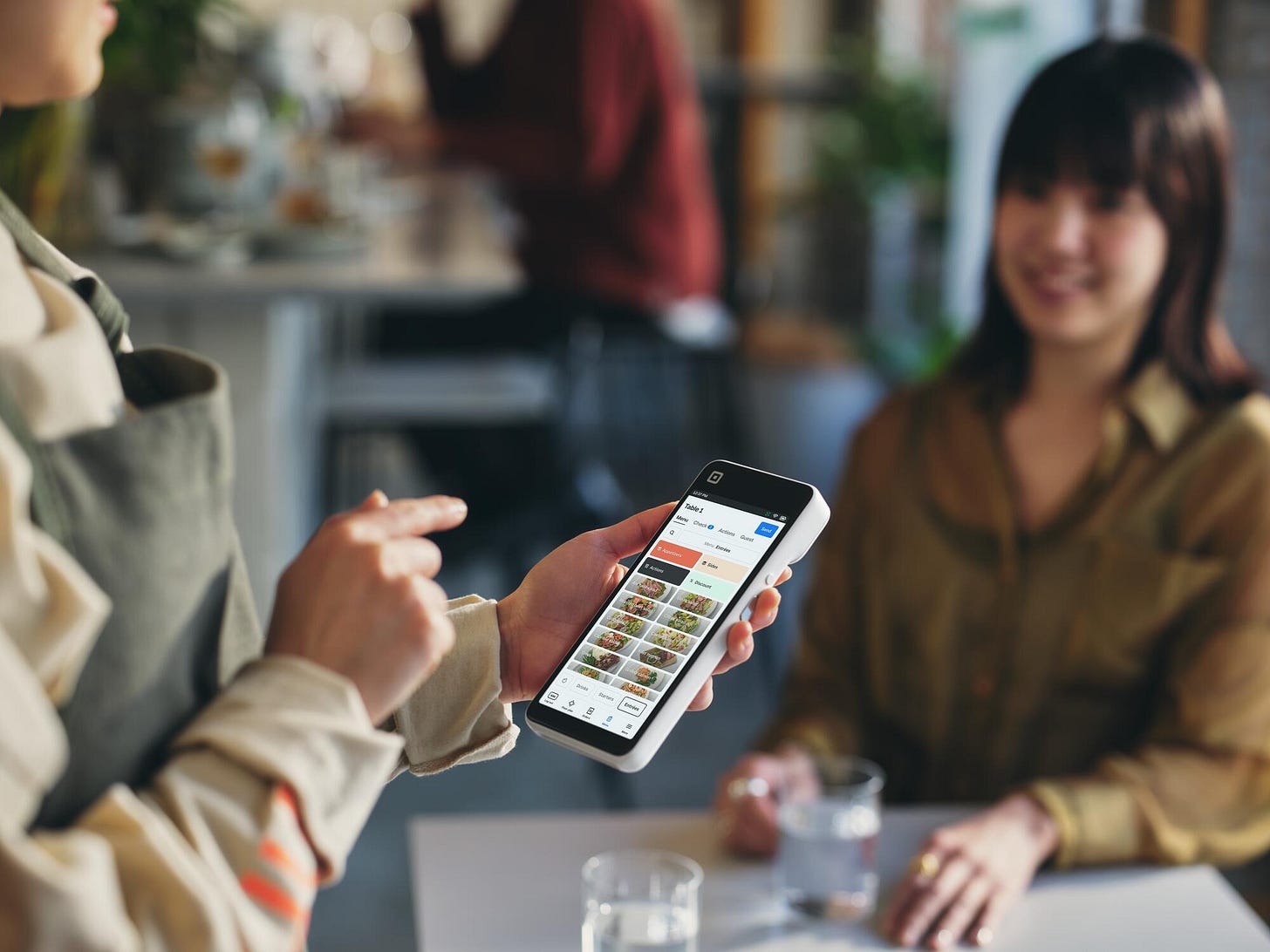(Pay @ the) Table stakes
Square’s new handheld and our new normal
Pay at the table has finally arrived. In my completely nonscientific analysis of observed restaurant behavior and the cadence at which tech companies are releasing hardware updates that support the practice, we’re all getting used to a new way of settling the bill at restaurants.
In fact, recent survey data from the National Restaurant Association found about half of operators are planning to devote resources to contactless ordering or payment this year.
Point of sale and payments provider Square introduced its new handheld device this week, giving restaurants and other merchants on the platform — they call them “sellers” — a kitted-out mobile option for taking orders and payments from diners.
The device is meant to be flexible; it serves employees working in table service or counter service or line-busting, the industry term for sending an employee to take orders from a long line. (It works in retail settings, too, but for purposes of this newsletter, we’ll stick to restaurants.) Diners can tap to pay with cards or phones or, if you’re my husband, a smartwatch.
“I like to think of it as a point of sale in your pocket,” Ming-Tai Huh, Square’s head of restaurants, told me during Tuesday’s launch event in San Francisco.
The “in your pocket” bit is clutch. For as long as US-based restaurant tech companies have been hawking handhelds, “pocket-sized” has been the topline design spec. Square’s new handheld hardware is only slightly bigger and heavier than my iPhone, and does, indeed, fit into a variety of back pockets.
“That makes you, as a server, more efficient,” Huh continued.
In tech circles, “efficiency” often means replacing human interaction with code or an algorithm or a robot or any other piece of technology that can be scaled and monetized. Anecdotally, restaurants are sometimes reluctant to trust tech-based efficiency as a positive attribute.
(Not anecdotally, in its latest state of the industry report, the National Restaurant Association found that nearly three-quarters of full-service restaurant operators said their investment in technology made their restaurant more efficient and productive, so maybe the tide has turned here.)
To serve an audience of hospitalitarians, tech companies bill these products and services as tools that help humans do their jobs better. In other words, as Huh clarified during our conversation, “If your trade is, I can look you in the eye, as a guest, and I can give you a great recommendation on a cab franc — that shouldn’t be taken away from you.”
On the other hand: “If you want to make sure you have it in inventory, you have it available, you want to know what rack it’s on,” Huh said, a pocket-sized screen can quickly provide that information and, by extension, better service.
Easy ordering, inventory management, and payment is great for restaurant staff — at the very least, it’ll save them some steps back and forth from a centralized point of sale — but paying at the table is the real draw for diners. And as the tech restaurants use gets smaller and lighter and faster, pay-at-the-table has become, well, table stakes. In fact, the same industry report found diners, especially younger adults, want tech that makes things like ordering and paying easier at a restaurant.
Square competitor Toast launched its first handheld — a restaurant-specific device for tableside order-taking and payments — over five years ago. Despite the fact that much of the developed world had been paying at full service restaurant tables for years, restaurants faced a consumer adoption curve. Diners complained about tip prompts and customer surveys; screens still felt intrusive in some spaces as the devices disrupted the ritual of check presentation to cap service.
But the benefits seem to be willing us over. Now, features like easy check splitting and digital receipts play well at the end of the meal. In fact, as I remarked to Huh during Square’s launch event, it’s become uncomfortable when a server walks away from the table with my credit card.
Mostly, Square’s hardware release makes the point that the tech that runs a restaurant should be mobile, user-friendly, and fit in easily with any service style. Square got its start as a mobile payments company before moving to bigger and more centralized screens inside restaurants. Now it’s back on the take-payments-from-your-back-pocket game to help restaurants run. That’s positive change to get behind.




